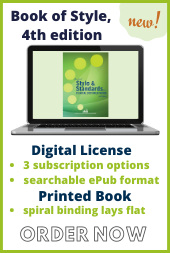Common Nomenclature and Formatting
AHDI Position Statement
Position
AHDI believes that the consistent, accurate documentation of patient care is critical to patient safety and continuity of care. Further, both the consistency and accuracy of that documentation can and should be facilitated by standards in the areas of nomenclature and formatting. As in all other areas of healthcare delivery, standards in healthcare documentation should be created and implemented to promote clarity and patient safety. AHDI believes that there are critical areas of a patient record where standardized nomenclature and formatting will ensure these consistent and safe patient outcomes. As the industry transitions toward an electronic health record, the incorporation of these standards into EMR nomenclature will be crucial to establishing these same safe documentation practices in an electronic environment.
Rationale
While there are many good reasons for the industry to embrace a common nomenclature system and adopt standardized formats, AHDI is primarily concerned with the adoption of standards in those areas of the patient report that carry the potential to directly impact patient safety. In an electronic environment, where formatting decisions are often based on the practical considerations of programming and interoperability, it is critical that attention be given to the impact that document format will ultimately have on the clarity of the record and the potential for misinterpretation that would adversely impact the patient.
Supportive Data
There are a number of areas in the patient record where standardized format and/or nomenclature have been recommended by industry authorities in order to address patient safety concerns. With regard to medications, for example, we rely on the United States Pharmacopoeia, the United States Food and Drug Administration and the National Coordinating Council for Medical Error Reporting and Prevention along with the Institute for Safe Medication Practices to establish formatting rules. Their recommendations have been incorporated into formal transcription/formatting rules. Some examples are:
- Avoid using all capitals because they are disruptive to the reader and emphasize other parts of the information than the drug name.
Example:
Correct: Imipramine HCl 50 mg tablet 2 tabs p.o. q.h.s.
Incorrect: Imipramine HCl 50 MG tablet; 2 TABS PO QHS RX - Avoid lowercase abbreviations without periods because some may be misread as words.
Example:
Correct: Tylenol 2 pills b.i.d.
Incorrect: Tylenol 2 pills bid - When two numbers are consecutive, spell out one of them to avoid confusion and help prevent dosage errors.
Example:
Correct: Os-Cal 500 one daily
Incorrect: Os-Cal 500 1 daily - Insert a space after the numeral 4 in q.4 h. so that the number is more easily and clearly read.
Use lead in zeroes for drug dosages when decimals are used to avoid misreading the dosage as greater than 1.0 when the decimal is not recognized; helps eliminate inadvertent omission of the decimal
Example:
Correct: Lidocaine 0.75 mg/kg
Incorrect: Lidocaine .75 mg/kg
Correct formatting, including abbreviations and proper documentation of numerals with respect to medication orders, is extremely important to charting and patient safety. For example, .25 could be misread as 25. In contrast, 0.25 communicates the correct dosage without potential for misinterpretation. Because these types of errors have been identified in the patient record and have been linked to patient fatalities, the recommendations provided by the Institute for Safe Medication Practices (ISMP) and by the Joint Commission for Accreditation of Healthcare Organizations (JCAHO) have been instituted to protect patients from these outcomes.
Recommendation
These practices are among the documentation and nomenclature standards that AHDI strongly recommends for industry adoption to promote clarity in the record in the best interest of patient care and safety. To that end, AHDI has made formal recommendation to the Certification Commission for Healthcare Information Technology (CCHIT) that these standards be adopted and incorporated into current EMR nomenclature to ensure that current and future EMR/EHR technologies are developed with these standards in place.






